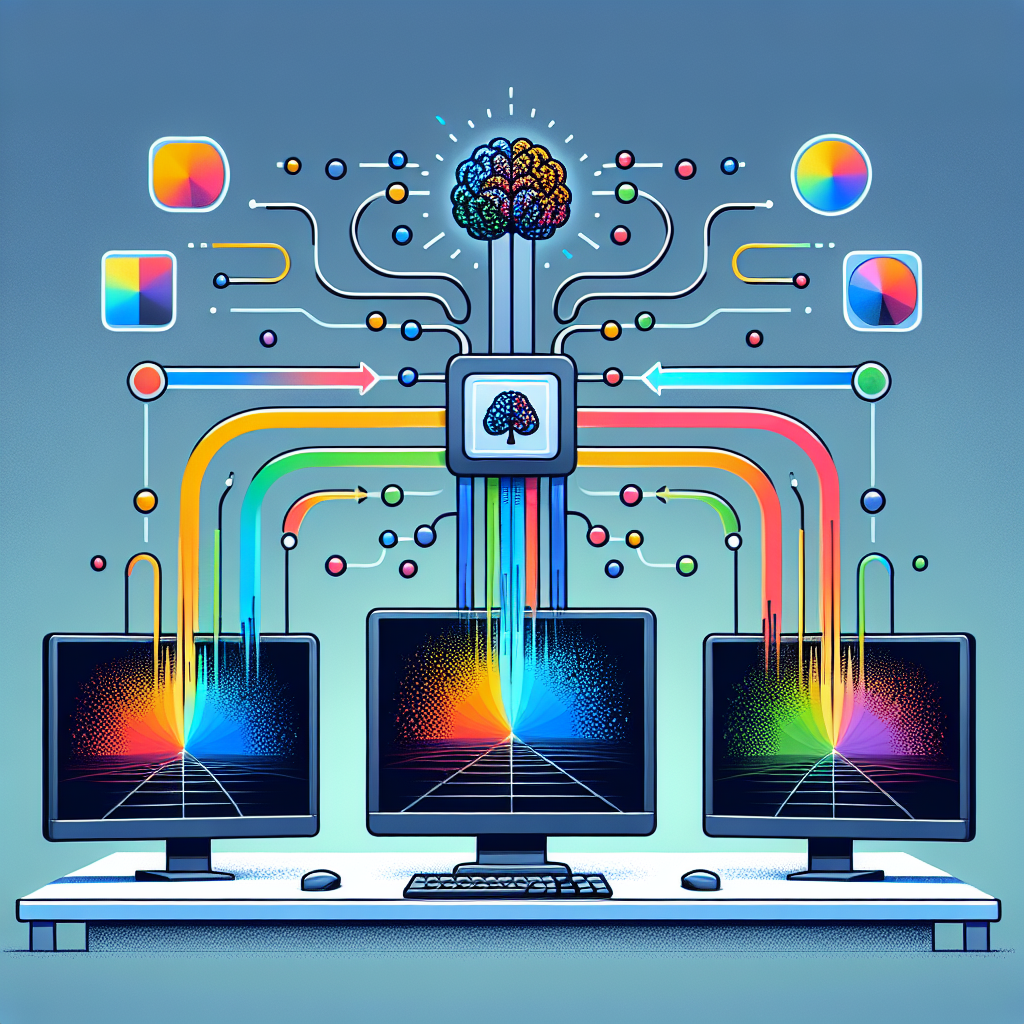The advent of Artificial Intelligence (AI) has revolutionized numerous fields, and display technology is no exception. One of the emerging trends is AI-enhanced color matching across multiple displays. This technology ensures that colors remain consistent across several screens, which is particularly important in fields like graphic design, video production, and even gaming. This article delves into how monitors with AI-enhanced color matching work and the benefits they offer.
Understanding AI-Enhanced Color Matching
Color matching is the process of ensuring that colors appear the same on different screens. Traditional color matching can be a time-consuming and imperfect process, often requiring manual adjustments. AI-enhanced color matching automates this procedure, leveraging machine learning algorithms to analyze color discrepancies and make real-time adjustments.
| Feature | Traditional Color Matching | AI-Enhanced Color Matching |
|---|---|---|
| Automation | Manual | Automatic |
| Time Consumption | High | Low |
| Accuracy | Variable | High |
| Complexity | Complex | Simple |
How AI-Enhanced Color Matching Works
Machine Learning Algorithms
At the heart of AI-enhanced color matching are machine learning algorithms. These algorithms are trained on vast amounts of color data, learning how different displays render colors. They can then predict how a color will appear on a given screen and make necessary adjustments to ensure consistency. The continuous learning process allows these algorithms to get better over time, offering increasingly accurate color matching.
Colorimeter and Sensor Integration
Another critical component is the integration of colorimeters and sensors into the display hardware. These devices measure the color output of each screen, providing real-time data that the machine learning algorithms use for adjustments. Sophisticated sensors can even detect ambient lighting conditions, further refining color accuracy.
Real-Time Adjustments
AI-enhanced color matching systems are capable of making real-time adjustments. As soon as a color discrepancy is detected, the system automatically corrects it. This can be particularly useful in dynamic environments like live broadcasting or gaming, where color accuracy can significantly impact the viewer’s experience.
Benefits of AI-Enhanced Color Matching
Improved Accuracy
One of the most significant benefits is improved color accuracy. AI algorithms can analyze and adjust colors more accurately than traditional methods. This is essential for professional fields like graphic design and video production, where color accuracy is non-negotiable.
Time Efficiency
By automating the color matching process, AI technology saves time. Professionals no longer have to spend hours manually adjusting color settings across multiple displays. This efficiency allows them to focus more on their core tasks.
Consistent User Experience
For businesses that use multiple displays, such as digital signage in retail or stock trading floors, consistent color matching ensures a unified visual experience. This can improve branding and customer satisfaction.
Applications of AI-Enhanced Color Matching
- Graphic Design: Ensures color consistency across monitors, crucial for accurate design work.
- Video Production: Enables precise color grading, essential for high-quality video content.
- Gaming: Provides a more immersive and visually consistent gaming experience.
- Healthcare: Accurate color rendering in diagnostic imaging can be critical for accurate diagnoses.
- Retail: Consistent displays enhance branding and customer engagement in digital signage.
Challenges and Future Directions
While AI-enhanced color matching offers numerous benefits, it is not without challenges. The initial setup can be complex, requiring the integration of advanced sensors and calibration hardware. Additionally, the technology is still evolving, and further advancements are needed to make it more accessible and cost-effective.
Future Innovations
Future developments may include even more sophisticated algorithms capable of understanding and adjusting for human perception of color, not just digital inconsistencies. This could further refine the accuracy and effectiveness of AI-enhanced color matching systems.
Conclusion
AI-enhanced color matching across multiple displays is a game-changing technology. By leveraging machine learning and real-time adjustments, it offers improved color accuracy, time efficiency, and a consistent user experience. While challenges remain, the future looks promising for this innovative technology, offering endless possibilities for professionals across various fields.

